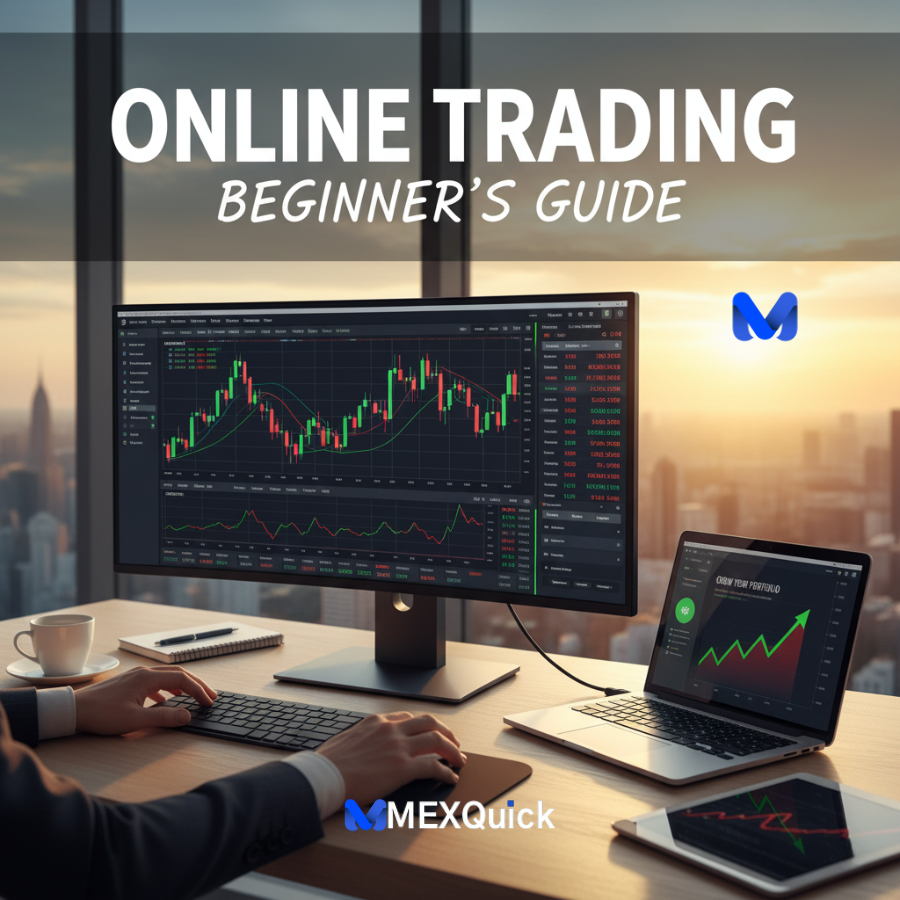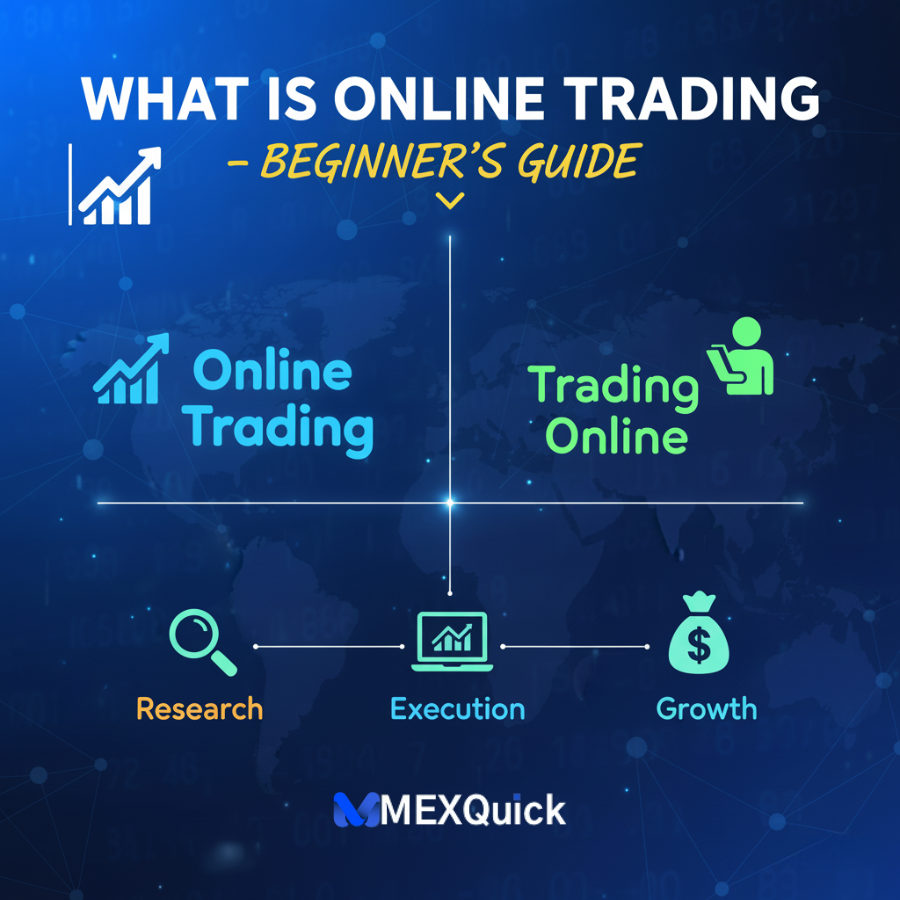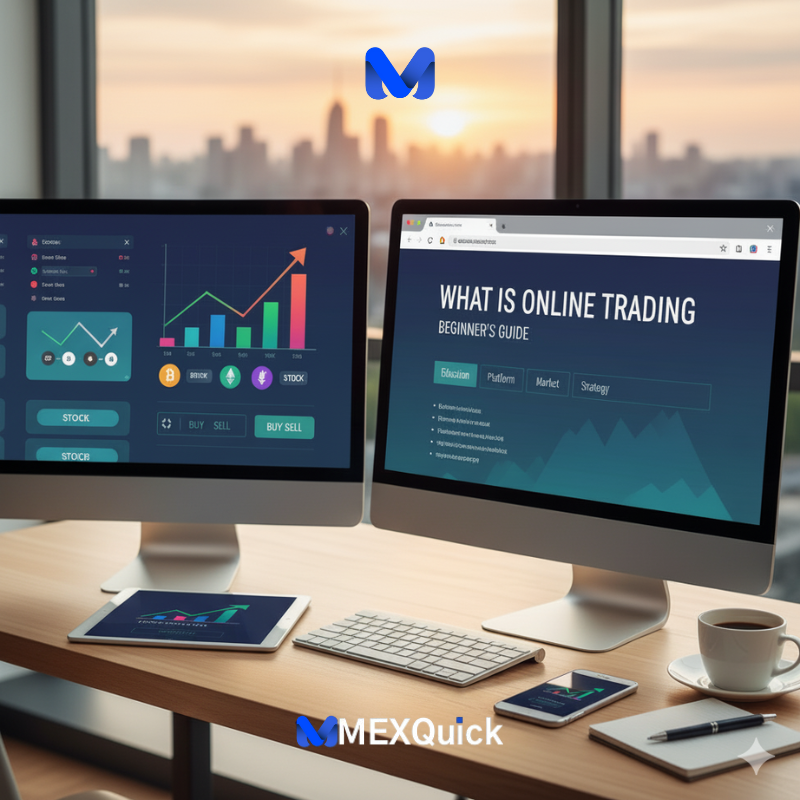
Let me tell you a quick story. A few years back, a friend of mine thought investing was something only for Wall Street bankers in fancy suits. Then, he discovered online trading. Starting with just a few hundred dollars, he began buying shares of companies he believed in. Fast forward to today, and that side project has grown into a significant part of his financial portfolio.
Sound intriguing? It should. Online trading has democratized the financial markets, putting the power to invest directly into your hands, from your laptop or smartphone. But here’s the thing: it’s not a guaranteed path to riches. It’s a powerful tool that requires knowledge, strategy, and a level head.
If you’ve ever wondered, “What exactly is online trading, and how can I start without losing my shirt?”—you’re in the right place. This beginner’s guide to online trading will cut through the jargon and give you a clear, actionable roadmap. I’ll explain how online trading works, the key steps to get started, and the common pitfalls to avoid. Let’s turn that curiosity into confidence.
What is Online Trading? Demystifying the Digital Marketplace
At its core, online trading is simply the act of buying and selling financial instruments through an internet-based platform, provided by a brokerage firm. Think of it as a digital gateway to the world’s financial markets.
Gone are the days of calling a broker on the phone and paying high commissions for every trade. Today, you can execute trades with a few clicks or taps. The “instruments” you can trade are vast, including:
-
Stocks: Shares of ownership in a public company (e.g., Apple, Tesla).
-
Bonds: Loans you make to a company or government, which pay interest.
-
Exchange-Traded Funds (ETFs): Baskets of securities that track an index or sector (e.g., an S&P 500 ETF).
-
Mutual Funds: Professionally managed pools of money from many investors.
-
Forex (Foreign Exchange): Currencies, like trading Euros for US Dollars.
-
Cryptocurrencies: Digital assets like Bitcoin and Ethereum.
The fundamental goal of trading online is to generate a profit by buying an asset at a lower price and selling it at a higher price (or vice versa, through “shorting”). It’s distinct from long-term “investing,” which typically involves buying and holding assets for years. Trading often involves a more active, short-to-medium-term approach.
How Online Trading Works: The 5-Step Process from Idea to Execution

Understanding the mechanics is crucial. It’s not magic; it’s a streamlined process. Here’s a breakdown of how online trading works in practice.
Step 1: You Place an Order
You log into your brokerage account, search for a stock symbol (like “AAPL” for Apple), and decide on an order type. The two most common are:
-
Market Order: An instruction to buy or sell immediately at the best available current price.
-
Limit Order: An instruction to buy or sell only at a specific price or better. This gives you more control but doesn’t guarantee the trade will execute.
Step 2: The Broker Routes the Order
Your brokerage firm doesn’t just hold your money; it acts as your agent. It sends your order to a marketplace, like a stock exchange (e.g., the New York Stock Exchange).
Step 3: The Order is Matched and Executed
On the exchange, your buy order is matched with a sell order from another trader. This matching is what determines the price you see fluctuating on screen. Once a match is found, the trade is executed.
Step 4: The Settlement Process Begins
After execution, the trade isn’t finalized instantly. The settlement process—the official transfer of the security to your account and cash to the seller—typically takes two business days (known as T+2).
Step 5: The Trade is Reflected in Your Account
Your brokerage platform will immediately show the “executed” trade in your portfolio, even before settlement is complete. The cash or position is updated.
This entire process, which once took minutes or hours over the phone, now happens in milliseconds.
Getting Started with Your First Trade: A Beginner’s Action Plan
Ready to dip your toes in? Follow this numbered checklist. This is the most actionable part of this beginner guide to online trading.
1. Define Your Goals and Risk Tolerance
Before you invest a single dollar, ask yourself: Why am I doing this?
-
Goal: Is it for a down payment on a house in 10 years? Supplemental income? Learning a new skill?
-
Risk Tolerance: Be brutally honest. How will you feel if your portfolio drops 20% in a month? If the thought keeps you up at night, you should adopt a more conservative strategy. A 2023 study by the FINRA Investor Education Foundation found that over 50% of investors reported feeling anxious about their portfolio performance during market downturns.
2. Choose an Online Brokerage Account
This is your most important decision. Look for:
-
Low Fees: Many brokers now offer $0 commission trades on stocks and ETFs.
-
User-Friendly Platform: The interface should be intuitive for a beginner.
-
Educational Resources: Quality articles, webinars, and tutorials are invaluable.
-
Account Minimums: Many great brokers have no minimum to open an account.
Popular options for beginners include Fidelity, Charles Schwab, E*TRADE, and TD Ameritrade.
3. Fund Your Account
Link your bank account (checking or savings) to your new brokerage account and transfer funds. This process usually takes 1-3 business days. Start with an amount you are completely comfortable with potentially losing. This is your “learning capital.”
4. Practice with a Demo Account
Most major brokers offer a “paper trading” or demo account. This is a risk-free simulator where you can practice trading online with virtual money. It’s the best way to learn the platform’s features and test strategies without financial risk.
5. Place Your First Small Trade
Once you’re comfortable, start small. Buy a single share of a company you know well and have researched. The goal of your first trade isn’t to make money—it’s to learn the process and manage your emotions.
Essential Online Trading Strategies for Beginners

You don’t need a complex algorithm to start. Focus on these foundational approaches.
Start with Long-Term Investing (The “Tortoise” Approach)
For most beginners, the safest strategy is to think like an investor, not a day trader. This involves:
-
Buy-and-Hold: Purchasing quality stocks or ETFs and holding them for years, weathering short-term market volatility.
-
Dollar-Cost Averaging: Investing a fixed amount of money at regular intervals (e.g., $500 every month). This reduces the risk of investing a large amount at a market peak.
Understand Basic and Technical Analysis
-
Fundamental Analysis: Evaluating a company’s health by examining its revenue, profits, industry position, and competitors. You’re asking, “Is this company fundamentally strong?”
-
Technical Analysis: Studying price charts and trading volumes to identify patterns and trends. You’re asking, “Is now a good time to buy based on market sentiment?”
As a beginner, focus first on understanding fundamental analysis. It’s the bedrock of sensible investing.
Common Pitfalls to Avoid in Your Trading Online Journey
Learning what not to do is as important as learning what to do.
-
Trading with Emotion: Fear and greed are your worst enemies. Don’t panic-sell during a dip or FOMO-buy (Fear Of Missing Out) during a spike. Stick to your plan.
-
Overtrading: Making too many trades can lead to high fees and losses. It’s often called “churning.” A 2020 study by professors at the University of California showed that the most active traders actually earned lower returns than the market average.
-
Chasing “Hot Tips”: If you hear about a “can’t miss” stock tip on social media, you’ve probably already missed the boat. Do your own research.
-
Not Diversifying: The old saying “don’t put all your eggs in one basket” is golden rule #1 in finance. Spread your investments across different asset classes and sectors to manage risk.
Conclusion: Your Path Forward in Online Trading
So, what is online trading? It’s your accessible, powerful, and personal portal to the financial markets. We’ve covered the basics: from defining the concept and understanding the 5-step process to creating a solid action plan and avoiding beginner mistakes.
Remember, the most successful traders are not necessarily the ones who make the most brilliant moves, but the ones who make the fewest big mistakes. They are disciplined, patient, and continuously learning.
Your Actionable Next Steps:
-
Educate Yourself Further: Before funding an account, spend a week reading the educational center of a major brokerage.
-
Open a Demo Account: Pick a broker and practice for at least one month. Track your virtual performance.
-
Start Small & Think Long-Term: When you go live, begin with a small, diversified portfolio and focus on the long game.
The world of online trading is waiting for you. It’s a journey of education as much as it is of finance.
I’d love to hear from you. What part of online trading are you most excited or nervous about? Drop a comment below, and let’s continue the conversation. If you found this guide helpful, please share it with a friend who might benefit from it
